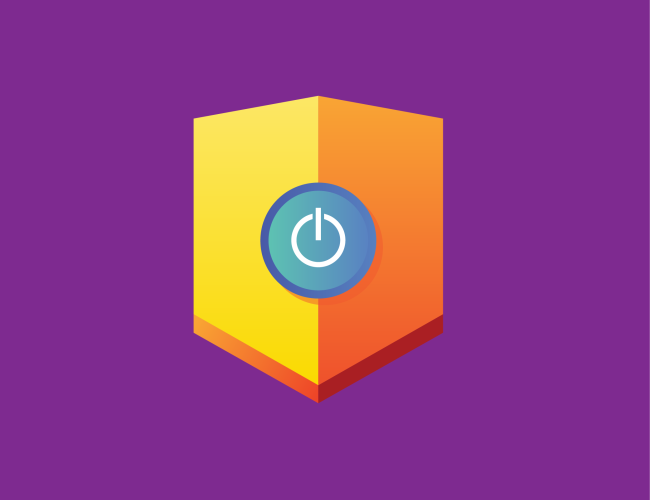Cybersecurity Basics
Cybersecurity Basics is an introductory course for students in grades K-8. This course introduces cybersecurity topics that affect our everyday life in plain, simple language, making it accessible to all. It can be taught in any order and by any teacher.
This course is divided into 2 primary domains:
Security - explores various ways we protect data and information through people, processes, and technology; the types of attacks that must be defended against; and the concepts used to secure information, networks, and physical assets.
Digital Citizenship - explores how our actions affect the larger digital world; how ethics, laws, and policies affect our digital lives; and what it means to be an informed cyber citizen.
Students will use a real-life example to describe the concept of passwords. They will identify that some passwords are strong and others are weak. Students will also explain why a password is important.
Students will identify authentication measures that they might use at school or at home. They will also learn how authorization is used to restrict what actions a user can perform.
Students will research the various factors of multifactor authentication. Students will learn how multi-factor authentication prevents unauthorized users such as threat actors from gaining access to devices and accounts.
Students will identify the features of a strong password while recognizing the importance of password protection. Students will also create a secure password.
Students will explore physical security around their school and how to verify someone's identity.
Students will explore physical access controls that protect people, places, and things from malicious intent. Students will develop a security plan using modern security tools.
Students will explore how physical access controls and the concept of defense in depth are critical cybersecurity protections against threat actors. Students will use and develop layered security plans.
Students will explore the risks and vulnerabilities of online gaming. Students will identify potential cyber threats and create a way to inform others about cyber threats.
Students will recognize types of malware in a given real-life scenario.
Students will students will explore how using more than one security tool helps keep people and places and devices safe.
Students will discuss how different network security components can provide protection individually but are even stronger when used together as a layered security solution for devices and networks.
Students will explore how combining good cybersecurity practices can increase user safety when exploring the Internet.
Students will explore how symbols can be used to create a secret code.
Students will explore how information is encrypted and why it should be kept secure.
Students will learn about the methods of encrypting information when it is exchanged online and the importance of HTTPS to secure information online.
Students will use CYBER.ORG’s version of the Pigpen cipher to encrypt and decrypt messages to model the necessity of encryption when sending and receiving information.
Students will explore the three states of data and correlate various threats to each state of data.
Students will explore how to recognize and avoid the threat of phishing scams.
Students will explore the CIA Triad as a model for cybersecurity policy creation within an organization.
Students will explore the idea that digital devices can be used in good ways and in bad ways. Students will also list examples of information that needs to be protected.
Students will explore how different choices are made when interacting with others online. Students will compare ethical and malicious decisions and the possible motivations behind them.
Students will explore avatars and how a real person is on the computer behind the character. Students will consider how to protect information when interacting with avatars because they are exchanging information with a real person. This connects to the cybersecurity concept of spoofing.
Students will explore the risks and vulnerabilities of online gaming software and their associated cyber threats.
Students will explore how malicious actions threaten network security as they analyze social engineering attacks.
Students will explore what is okay to share about themselves and focus on examples of public versus personal information.
Students will explore personal versus public information and explain why not to share personal information online.
Students will analyze various scenarios to discuss the risks and benefits of sharing Personally Identifiable Information
Students will explore the personally identifiable information that has currently been disclosed about them and determine how to detect and prevent future disclosure.
Students will discuss how user agreements relate to agreeing to use appropriate behavior in class and on devices.
Students will discuss how user agreements relate to agreeing to use appropriate behavior in class and on devices.
Students will explore types of user agreements and learn why they exist and the potential risks that may be hidden within.
Students will explore how different online actions can create the first steps of their positive or negative digital footprint.
Students will explore the concept of a digital footprint and the importance of having a positive digital footprint.
Students will explore how data collected from several sources makes up digital footprint.
Students will explore the concept of a permanent digital footprint and the importance of developing good online habits before their digital footprint really gets growing.
Students will discuss examples of cyberbullying and model age-appropriate responses to cyberbullying.
Students will discuss cyberbullying and how to respond as an upstander instead of a bystander in these situations.
Students will explore the effects of cyberbullying and methods to identify and prevent it.
Students will explore the effects of cyberbullying and methods to help prevent it.
Students will explore the importance of protecting intellectual property through copyright, patents, and trademarks; furthermore, they will discuss how intellectual property relates to fair use.
Students will discuss some of the laws that govern their online interactions and how those laws are designed to protect individuals and keep them safe online.
